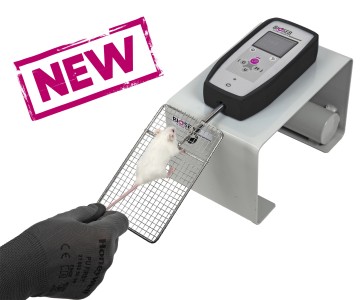Authors
Zolkowska D, Andres-Mach M, Prisinzano TE, Baumann MH, Luszczki JJ.
Lab
Department of Neurology, School of Medicine, University of California, Davis, Sacramento, California, USA.
Journal
Psychopharmacology (Berl).
Abstract
RATIONALE:
Seizures occur when the excitability of brain circuits is not sufficiently restrained by inhibitory mechanisms. Although modafinil is reported to reduce GABA-activated currents and extracellular GABA levels in the brain, the drug exerts anticonvulsant effects in animal studies.
OBJECTIVES:
The aim of this study was to determine the effects of modafinil and its metabolites (sulfone and carboxylic acid) on the anticonvulsant action of four classical antiepileptic drugs (AEDs)-carbamazepine (CBZ), phenobarbital (PB), phenytoin (PHT), and valproate (VPA).
METHODS:
Anticonvulsant activity was assessed with the maximal electroshock seizure threshold (MEST) test and MES test in mice. Brain concentrations of AEDs were measured to ascertain any pharmacokinetic contribution to the observed anticonvulsant effects.
RESULTS:
Intraperitoneal injection of 75 mg kg(-1) of modafinil or its metabolites significantly elevated the threshold for electroconvulsions in mice, whereas 50 mg kg(-1) of each compound enhanced the anticonvulsant activity of CBZ, PHT, and VPA, but not that of PB. A 25-mg kg(-1) dose of modafinil or its sulfone metabolite enhanced anticonvulsant activity of VPA. Modafinil and its metabolites (50 mg kg(-1)) did not alter total brain concentrations of PB and VPA but did elevate CBZ and PHT.
CONCLUSIONS:
Enhancement of anticonvulsant actions of VPA by modafinil in the mouse MES model is a pharmacodynamic effect. Collectively, our data suggest that modafinil may be a safe and beneficial adjunct to the therapeutic effects of AEDs in human patients.
BIOSEB Instruments Used
Grip strength test (BIO-GS3)
Source :

 Douleur - Allodynie/Hyperalgésie Thermique
Douleur - Allodynie/Hyperalgésie Thermique Douleur - Spontanée - Déficit de Posture
Douleur - Spontanée - Déficit de Posture Douleur - Allodynie/Hyperalgésie Mécanique
Douleur - Allodynie/Hyperalgésie Mécanique Apprentissage/Mémoire - Attention - Addiction
Apprentissage/Mémoire - Attention - Addiction Physiologie & Recherche Respiratoire
Physiologie & Recherche Respiratoire




































 Douleur
Douleur Système Nerveux Central (SNC)
Système Nerveux Central (SNC)  Neurodégénérescence
Neurodégénérescence Système sensoriel
Système sensoriel Système moteur
Système moteur Troubles de l'humeur
Troubles de l'humeur Autres pathologies
Autres pathologies Système musculaire
Système musculaire Articulations
Articulations Métabolisme
Métabolisme Thématiques transversales
Thématiques transversales Congrès & Meetings
Congrès & Meetings 